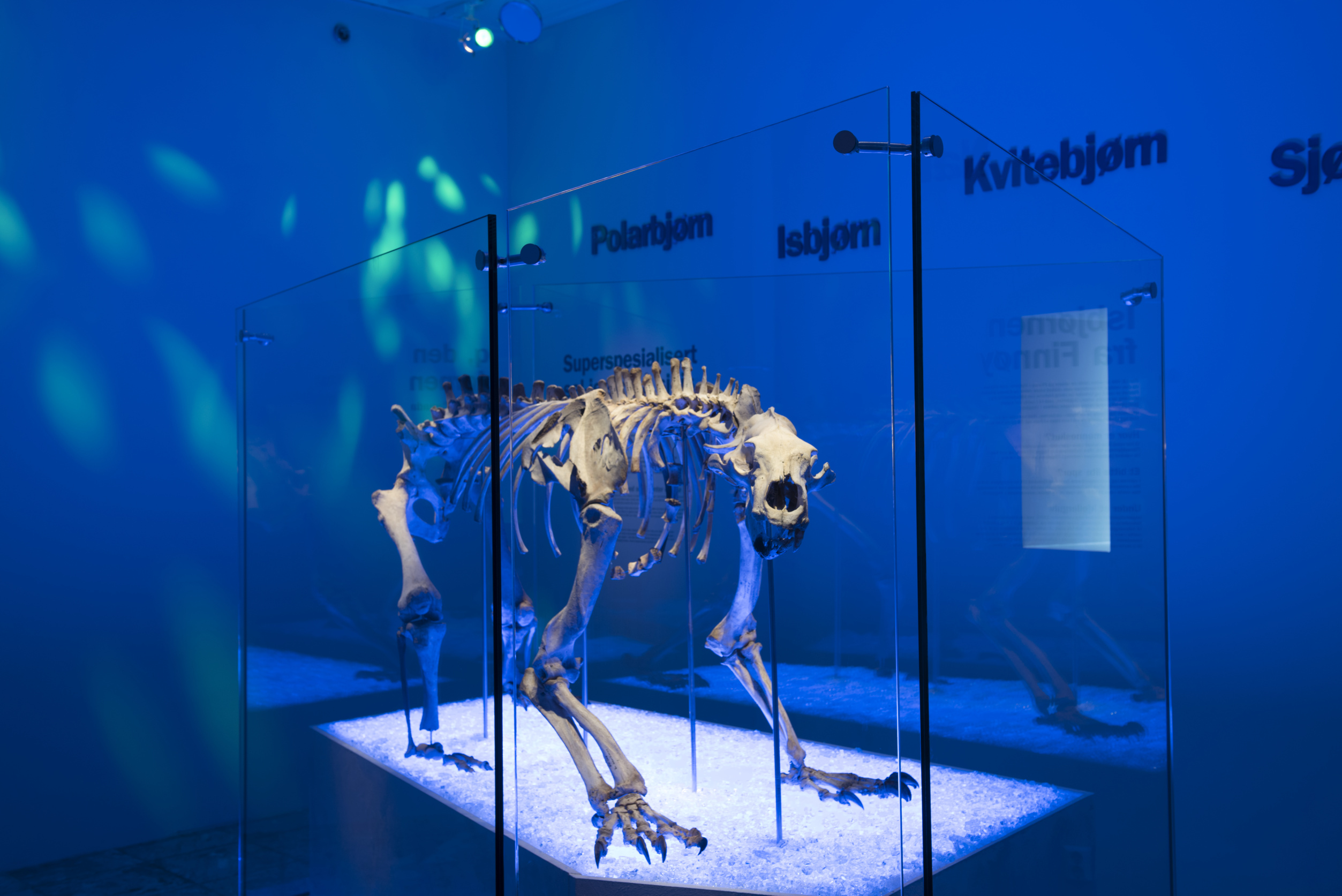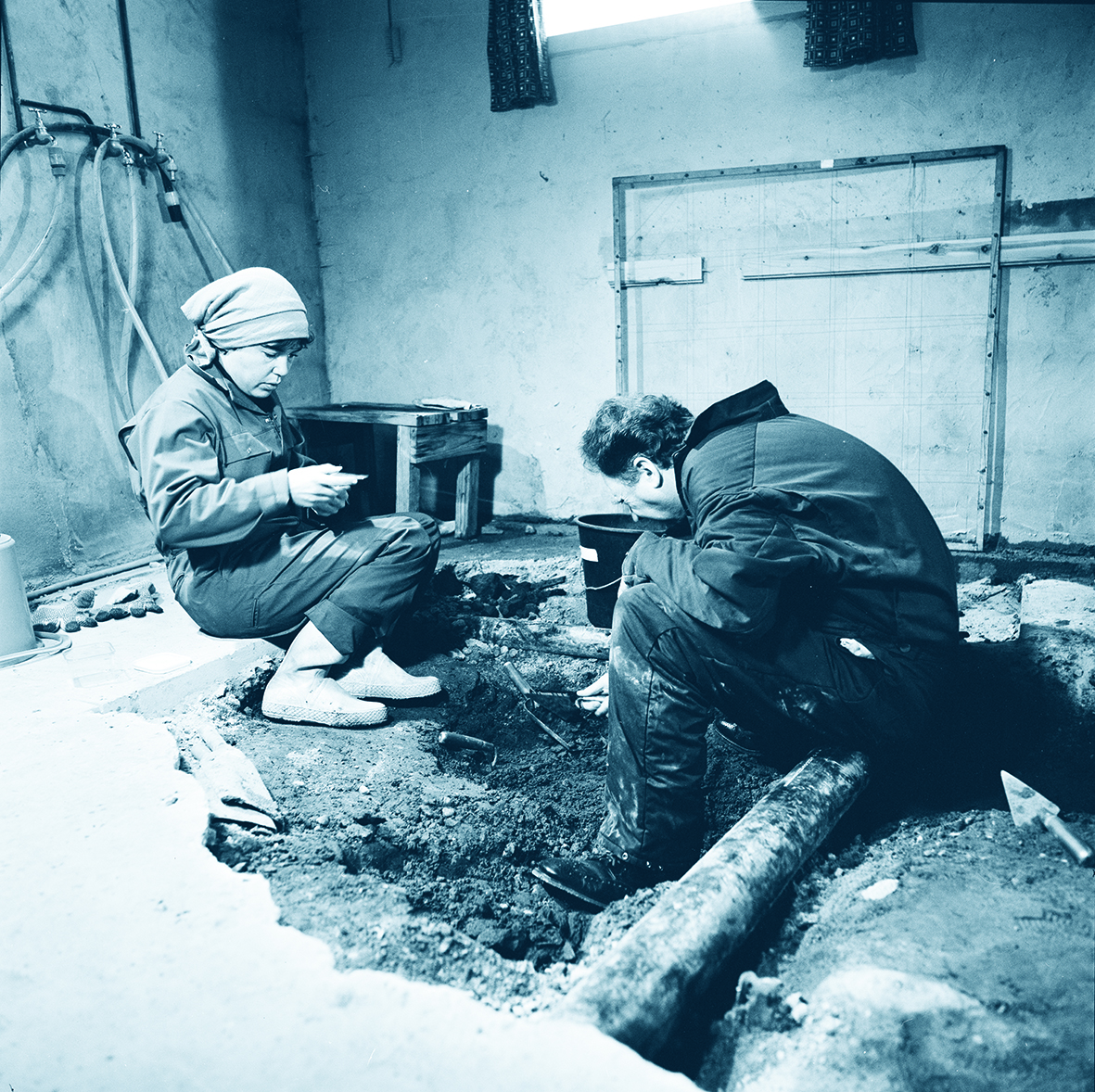The skeleton of the Finnøy Polar Bear is the most complete discovery ever made of a polar bear from the Ice Age. Now, the Finnøy Polar Bear is on display in its own room in the exhibitions at the Museum of Archaeology in Stavanger.

First time published 26.01.2018
Imagine you are 12,400 years in the past. Much of Norway is covered with ice and the present-day island of Finnøy exists as only two small islets. The sea is 40 metres above the current level. A polar bear embarks on a long swim through the icy waters and never reaches land. Some 12,400 years later, the skeleton of that same polar bear is discovered under a basement floor in the village of Judaberg on Finnøy.
The Finnøy Polar Bear was 28 years old, weighed about 600 kilos and lived in Rogaland at the end of the Ice Age. It was probably among the very last of its kind along the Norwegian coast. The wonderfully preserved polar bear skeleton was found under the floor of a basement laundry room on Finnøy in Ryfylke.
Old bones in a box

At that time, Hanne Thomsen was employed as a quaternary geologist at the Museum of Archaeology in Stavanger. Purely by chance, she found herself in possession of a box of big old bones. After a closer look, Thomsen and her colleagues at the Museum of Archaeology realised that they must be the remains of a polar bear—a very old polar bear. It turned out that the bones had been found while laying a sewage pipe for a new house on Finnøy. This was in 1976. The bones were then placed in a box, not to reappear until 6 years later.
At that point, the museum contacts the owners of the house, Sverre and Reidun Asheim, who say that there are more bones under the floor. Hanne Thomsen, Asbjørn Simonsen and Per Blystad, who all work at the Museum of Archaeology, together with zoologist Rolf Lie from the Museum of Zoology in Bergen, are given permission to pull up the floor in the couple’s laundry room—and they make a unique discovery. After digging down through 70 cm of sand and silt, they find a nearly complete skeleton of a polar bear from the Ice Age, encased in a 15 cm layer of clay. They find thigh bones and ribs, as well as remnants of the stomach with partially digested seal bones.
Most complete skeleton of an Ice Age polar bear
The skeleton was encased in clay and under excellent preservation conditions. In other words, the clay protected it from exposure to oxygen.
“When we found it, there were only nine other finds of polar bears from the Ice Age in the entire world. And this is still the most complete Ice Age polar bear from so far back in time,” says Hanne Thomsen.
The polar bear sank to the seabed, under about 25 metres of water, and was quickly buried in clay. Subsequently, when Finnøy rose from the sea, the polar bear’s remains would have been situated at the shoreline for a brief time before the beach moved further down to its current level.
It was purely a matter of coincidence that Mr and Mrs Asheim ended up building their house on the exact spot where the polar bear had found its final resting place.
Cause of death unknown
When the polar bear was dug out, museum experts speculated as to what could have been the cause of death. They concluded that it was unlikely that it died of hunger, as both seal and sculpin bones were found together with the skeleton. So, what happened to the Finnøy Polar Bear is still a mystery. The Finnøy Polar Bear was not entirely complete, and for a 1985 exhibition, they replaced the missing parts of the skeleton with bones from a present-day polar bear on loan from the University Museum in Bergen. Today, the missing bones have been replaced with plastic replicas and the other bear is back in Bergen. Fully assembled, the polar bear skeleton measures about 2.3 metres in length, is 0,6 meters wide and stands more than one metre high.
New exhibition
Mr and Mrs Asheim donated the skeleton to the Museum of Archaeology in 1982. In 1985, the museum arranged an exhibition entitled “The Finnøy Polar Bear”, which attracted a great deal of attention from visitors to the museum. Later, the polar bear was moved to the café area at the museum, where museum guides have used it in presentations for both children and adults, and the polar bear, affectionately named “Finn”, is one of the Museum of Archaeology’s most popular objects.
Now the polar bear has been moved back into the main exhibition area, where it has been given a place of honour. Visitors can follow Finn’s story and the exhibition draws parallels to present-day polar bears, which are classified as a vulnerable species.
